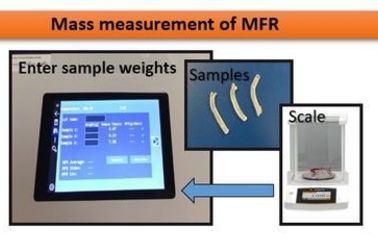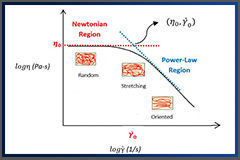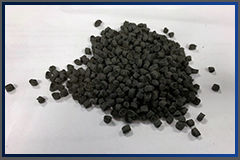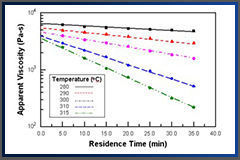We offer more than just product delivery...
Our task is not only to deliver a high-quality product, but also to help by sharing our knowledge and experience with you. By doing so, we save you time and money, and enable you to focus on other important aspects of your business.
How to Measure Polymer`s Apparent Melt Density using a Melt Indexer
Method A/B is a test that can be performed in a melt flow rate tester in order to calculate the value of the polymer`s melt density at a specific temperature. In a method A/B test, both a “method A” test and “method B” test are performed on the same charge of material. The melt flow rate derived from method A, is equated to the method B flow equation and solved for apparent melt density. The value in doing this test is obtaining a valid apparent melt density which can later be used in a solo method B test (there is no manual cuts of extrudate or weighing in method B) to achieve results equivalent to method A (operator must make manual cuts and weigh sample in method A).
Flow Curve Behavior of Polymer Melts
low curves of polymer melts (the graph of viscosity versus shear rate in the log-log scale) has two distinct behavior of Newtonian and Power law. At very low shear rates the Newtonian behavior dominates where the viscosity is independent of the shear rate and it approaches the value of which has been named as the zero-shear viscosity. After that, the viscosity begins to reduce at some critical shear rate (y0). At higher shear rates, the Power law behavior dominates where the viscosity decreases with increasing shear rate with negative slope of (n - 1).
Understanding the Shear Thinning Behavior of Thermoplastic Materials Using an Extrusion Plastometer (Melt Indexer)
The shear thinning behavior of thermoplastic materials can be characterized by performing a Flow Rate Ratio (FRR) test method in an extrusion plastometer (melt indexer). This test method, which is indicated as “Procedure D” in ASTM D1238, is a multi-weight test and is designed to obtain two or three flow rates at two or three different loads/shear stresses
Correlation of Online Rheometer to a Laboratory Melt Flow Rate Tester
Online rheometers have been used increasingly in plastics processing and recycling industry to provide continuous data stream of rheological properties and real-time information with th extrusion process. This is beneficial for the controlling of in-process product quality, reducing one's waste stream, and increasing of process efficiency. Dynisco® ViscoIndicator (VI) online rheometer is designed to duplicate the test conditions of a standard melt flow rate tester and monitor the melt mass flow rate (MFR) and melt volume flow rate (MVR) of the plastics materials while processing in an extrusion line.
How Rheological Data from a Capillary Rheometer Can Help to Have a Better Metal Injection Molding (MIM) Process?
Metal injection molding (MIM) is an advanced metalworking process to produce parts with complex shapes and high tolerances from a mixture of polymeric binder and metal particles/powders at specific volume ratios (feedstock). The flexibility and mass production of injection molding process makes it to be a great replacement to the traditional metallurgy process and therefore, MIM has been growingly performed in industry for large-number production of metal parts.
Extensional Viscosity – Rheological Significance of the Entrance Pressure Drop
Extensional/elongational viscosity measurements (melt strength) are of rheological importance in any plastic stretching process for example blow molding, sheet extrusion, blown film extrusion, fiber spinning, etc. as the plastic is constantly stretching or expanding in such processes. Two polymers may have same shear flow behavior, however they may show different extensional flow behavior depending on their molecular structure, branching, etc.
Characterizing Thermal Stability of Polymer Melts Using a Capillary Rheometer
A thermal stability test can determine the resistance of a polymer melt to a change in the molecular structure at the test temperatures. The results of this test depend on the temperature, residence time at that temperature, material formulation, presence of moisture and/or contaminates. It is well known that polymer rheological properties, namely shear viscosity, is very sensitive to the changes in the polymer molecular weight, and so monitoring of these parameters over time can provide information on the polymer`s thermal stability.
Detecting Polymers in Material Products
It can be very difficult, if not impossible, to achieve complete identification of most polymer products. However, in most cases, this is usually not needed; what is needed is the separation, or identification, of numerous molding materials whose identity has been lost, or an indication of the type of material used to create a component. In such cases, it is justified to use simple tests
















